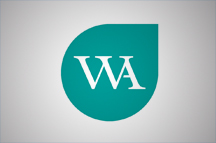The National Health Service and Community Care Act 1990 marked a watershed in the evolution of community care in the UK. After over 50 years of a service free from competition, this Act began the transition to a market driven model. The purchaser-provider split has defined how the NHS has functioned and been a bone of contention ever since.
Devised by Margaret Thatcher’s Conservative government in the 1980s, the Act required local authorities to carry out community care assessments of people’s needs and to plan and provide care based on their requirements. This included the allocation of funds for places in nursing and residential homes, as well as other services, including domiciliary care.
This aimed to provide a better and more cost-effective way to help individuals with mental health and physical disabilities by removing them from impersonal, old, and often harsh institutionalised environments, and allowing them to remain in their own homes and communities. However, as well as an attempt to improve the lives of residents in long term residential establishments, the Act demonstrated the government’s intention to bring market reforms into the public sector.
The Act first introduced the ‘internal market’ in the NHS. Parts of the health service that paid for care were divided from those that provided it. Key elements included the ‘purchaser-provider’ split in which District Health Authorities were re-cast as purchasers of care rather than providers, and self-governing NHS Hospital Trusts would earn revenue from the services they provided and operate with greater independence. This created what the government hoped would be effective competition between healthcare providers.
By 1991, the first 57 NHS trusts were established. There are now 134.
The reforms were politically controversial and also divided GPs – a key concern was purchasers may engage in ‘cream-skimming’ (now known as cherry-picking) of patients and services to increase profitability. In practice, however, purchasers tended to stick with their usual NHS providers, and the Conservative government did not push for any greater competition. The internal market is therefore better characterised by contestability – the possibility of changing to alternative providers – rather than actual competition between them.
Since then, the NHS has undergone a continuous process of market reform (and resistance to market reform) sparked by the Act and its repercussions. Health authorities evolved into Primary Care Trusts and then into Clinical Commissioning Groups (CCGs) and NHS trusts became, in the most part, foundation trusts. This process culminated in the introduction of the Health and Social Care Act 2012, which extended the marked-based approach to the NHS and emphasised a diverse provider market, competition, and patient choice as means of improving healthcare.
The government intended market reform to increase innovation, reduce costs, and ensure efficiency savings. To some extent this has succeeded – the King’s Fund, for example, highlights that while there is evidence to suggest competition has led to an increase in choice and a reduction in mortality rates in many hospitals, there is little to suggest whether it actually triggered significant improvements in quality. Many voices, though, have criticised this internal market for leading to higher costs. One doctor we spoke to called it the ‘infernal market’ and many working in the health service rue the impact of market reforms.
It is also not without some costs. While the exact cost of operating the internal market is hard to determine, the Centre for Health and the Public Interest estimates the figure to be £4.5 billion. The House of Commons Health and Social Care Select Committee suggested in 2010 that administrative costs in NHS England averaged at 14 per cent of the total budget. Others have suggested around £10 billion is diverted away from frontline services to administer the complex negotiations and contract monitoring that this market system requires. With the drive to reduce middle management and administration in the NHS, some of this is now falling on healthcare professionals shoulders, particularly in doctor-led CCGs.
There’s no doubt the Community Care Act revolutionised the structure of the NHS in separating the functions of care purchasing and care provision. The introduction of competition, which was later ingrained by the Health and Social Care act 2012, has entrenched a system-wide awareness of costs, efficiency, and accountability. But it is still not without controversy. While the 2012 Act was going through Parliament, one of the most contentious elements was increased competition, which eventually led to Andrew Lansley conceding that there would only be competition on quality, not on price. Many on the left bewailed ‘the privatisation of the NHS’ and suggested that the hand of the market would have a sinister effect – such as cherry-picking of service – but there has been little evidence of a significant increase in spending on private providers or widespread privatisation of NHS services.
Indeed, speaking at the launch of the Institute for Government’s report, The World’s Biggest Quango, earlier this year, the Health Secretary highlighted that the proportion of spending on the private sector in the NHS in 2017 didn’t rise at all and that growth in outsourcing has slowed to nil.
The 1990 Act set in motion changes to make the NHS more like a market, but a highly regulated one. The place of the market and the role of the private sector continue to be controversial – Labour have said they would strip out the market from the NHS (despite, arguably, playing a bigger role in the early noughties in making it part of the system).
With the NHS’s finances coming under increasing pressure, it remains to be seen whether this model of funding can deliver in the long term, or if a new revolution in care provision will be required. With the introduction of sustainability and transformation partnerships (STPs) – who are set to become accountable care organisations or systems – we may have witnessed the end to the purchaser-provider split – and the internal market – as we know it.
Beatrice Allen, Senior Account Executive












